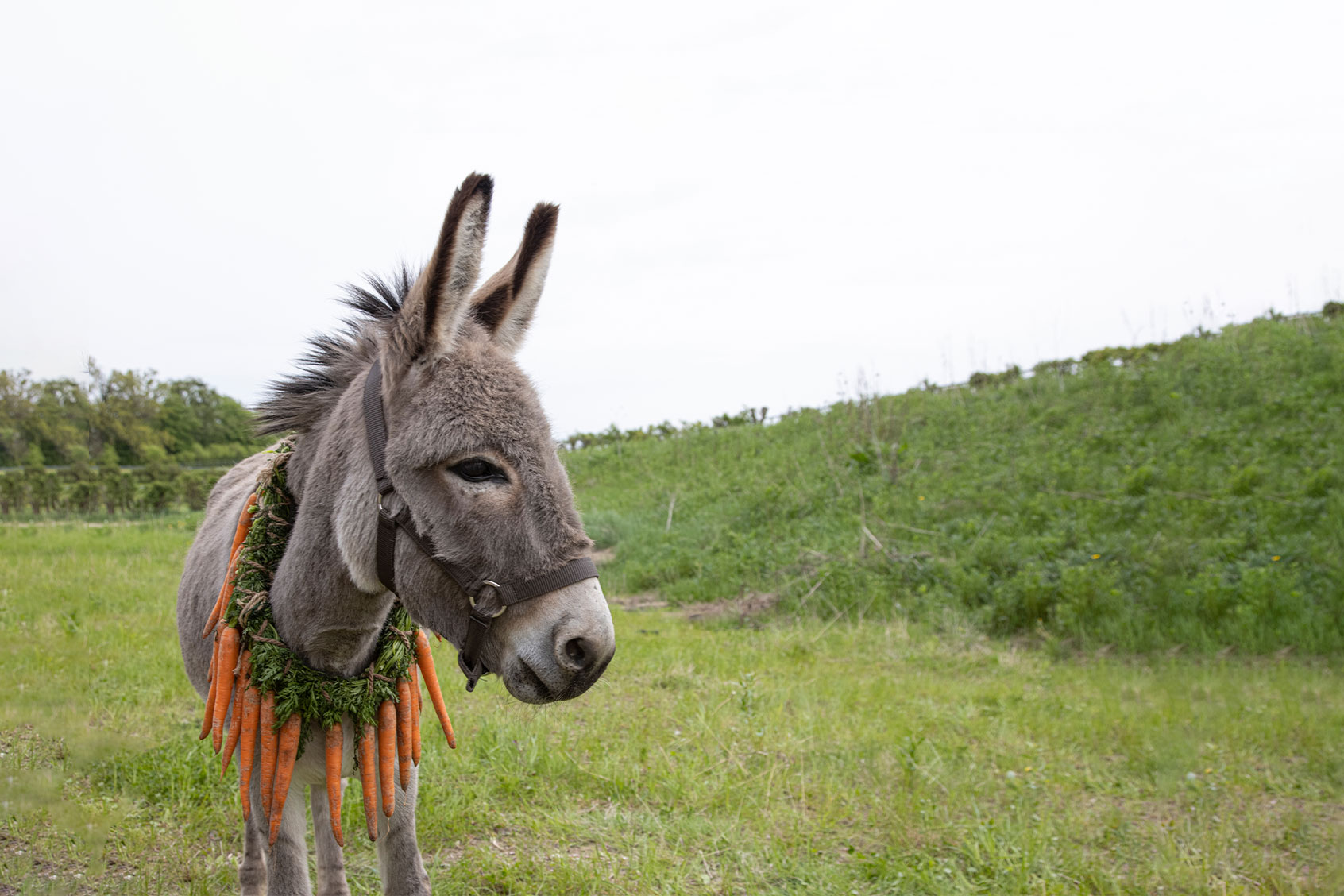Gorgeously filmed, experimental in style, and incredibly humanistic, “EO,” recounts the experiences of the titular donkey — frequently from the animal’s point of view. The film is Polish director Jerzy Skolimowski’s (“Four Nights With Anna“) homage to Robert Bresson‘s “Au Hasard Balthazar,” and it arrives with bona fides, having won the Jury Prize at the Cannes Film Festival earlier this year and is Poland’s selection as their official Oscar entry for Best International Film.
EO is first seen under a red strobe light with surging music. He is a circus animal who is cared for by Kasandra (Sandra Drzymalska) who is part of the Cyrk Orion. She feeds EO and gives him affection, and the donkey is wonderfully expressive even as the camera follows him trotting along. But protesters against animal abuse in the circus cause EO to be “repossessed” and taken from Kasandra. Viewers can see the sadness in his eyes.
The film then shows all the different experiences EO has on his own as he moves through the Polish countryside. The story is, of course, a metaphor with EO as the innocent who encounters all kinds of people. One could liken the animal to an immigrant who is forced to work — EO is seen hitched to a cart in his early scenes — or a symbol for Poland and how people in the country treat him, kindly and cruelly. There are children who pet him and ride him and others who exploit him. In one adorable moment, he munches on a carrot tied around his neck. There are folks who are gentle, such as Kasandra, who locates him in one charming scene and feeds him a muffin for his birthday. His braying when she leaves him is heartbreaking.
There are many striking scenes of EO on his own. He watches horses run free from the captivity of a trailer. One marvelous sequence has EO out in nature at night, and he sees frogs in the water, a spider in its web, an owl on a tree branch, a howling wolf and a racoon scurrying before lasers and gunshots spoil nature’s tranquility. There is also a fabulous drone shot through a forest and along a river that is scored to Pawel Mykietyn’s sonorous music. Even a tracking shot of EO trotting through a lighted tunnel is mesmerizing. (Michal Dymek did the exquisite cinematography.) And a breathtaking landscape is shrewdly seen in widescreen at first but later from between the slats that are penning EO in on a truck. (Freedom/captivity is a strong theme here.)
But as the film progresses, it has EO interacting with people. When he is near a soccer pitch, EO has an impact on a game during a penalty kick. He is taken to the afterparty by the winning team, and has smoke blown in his face. He is a passive participant as windows are broken but EO is beaten by hooligans. There are questions raised about his suffering as he is passed around and EO ends up on a farm where foxes are killed for their fur. His actions there include kicking a violent man, which should make audiences cheer.
“EO” does abruptly shift its storylines, which can be disconcerting, and his character can be in the background for some of the drama. One of the more interesting sequences has EO being transported by Mateo (Mateusz Kosciukiewicz) a trucker. EO is not in the frame when Mateo cleans himself up in a rest stop washroom or offers to help someone, nor does the animal see the shocking act of violence that occurs as this scene unfolds, but the film suggests EO senses it. (Viewers will feel it too.)
Likewise, when a young man, Vito (Lorenzo Zurzolo) encounters EO, he wonders if he is saving the donkey or stealing him. As he returns home to his Italian villa, he has a tense exchange with The Countess (Isabelle Huppert) that involves her breaking plates and tossing handfuls of silverware around in a scene full of drama. Again, it seems a bit far afield from EO’s story, but it is fascinating, and Huppert is dazzling in her cameo.
One sequence, around the film’s midpoint, features a robotic animal, which perhaps only emphasizes the beauty of EO, a real one, but an earlier scene of a horse being tenderly washed and groomed while EO watches, jealously, conveys his alienation more effectively.
Want a daily wrap-up of all the news and commentary Salon has to offer? Subscribe to our morning newsletter, Crash Course.
Such is the film’s narrative logic, and perhaps it is best to just let the film wash across the screen, not unlike a hypnotic series of slow-motion scenes of water near the film’s end. Viewers can make connections or interpret people, or actions, or emotions as desired. EO is not going to judge, but he is going to tell you what to think or feel, which is perhaps the beauty and brilliance of this uncommon film.
“EO” opens in New York City Nov. 18 with a platform release to follow.
Read more
movie reviews by Gary Kramer

